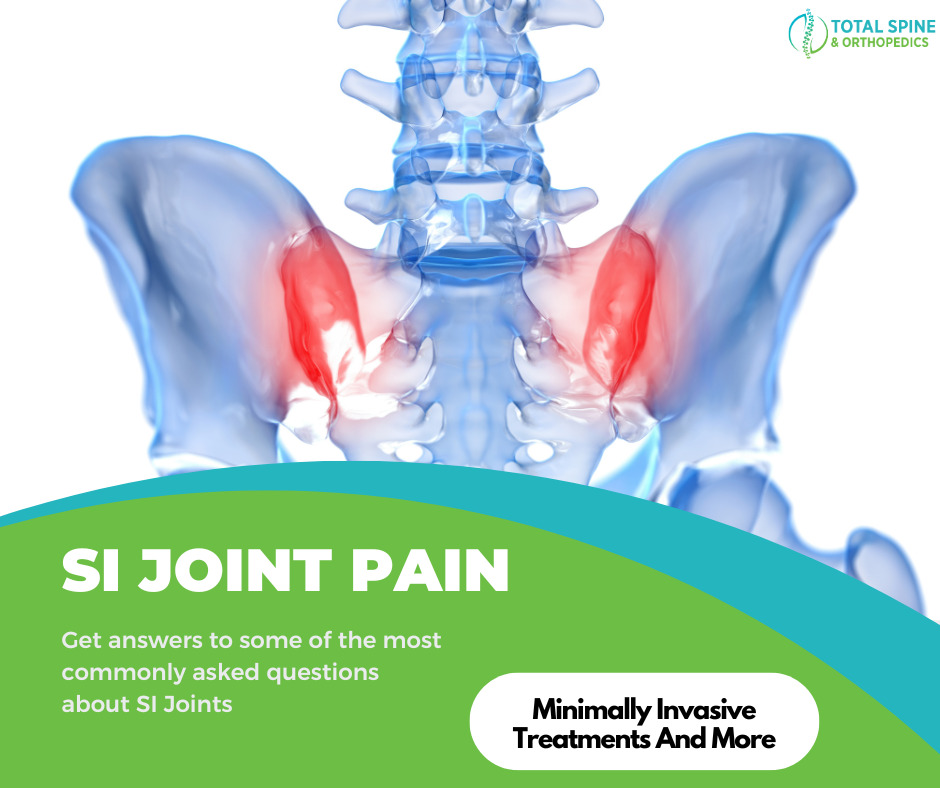SI (sacroiliac) joint pain is a common condition that affects one or both of the sacroiliac joints and can cause pain in the lower back or buttocks. It occurs when the SI joints between `the sacrum, a triangular bone at the base of the spine, and the ilium, the wing-shaped bone of the pelvis, experience inflammation or dysfunction.
What is the best way to relieve SI joint pain?
Relieving SI joint pain often requires a multifaceted approach that combines conservative measures, physical therapy, and, in some cases, medical or surgical interventions. These are some of the common methods used to treat SI Joint point.
- Physical Therapy and Exercise: Engaging in specific exercises and stretches that target the muscles and ligaments supporting the SI joint can help stabilize the joint, reduce pain, and improve flexibility. Examples include pelvic tilts, bridges, and hamstring stretches. If you are experiencing chronic SI joint pain, it may be wise to consult with a medical professional before beginning a long-term exercise plan.
- Medications: Over-the-counter nonsteroidal anti-inflammatory drugs (NSAIDs), such as ibuprofen, can help reduce pain and inflammation in the SI joint. In more severe cases, a healthcare professional may prescribe stronger medications or recommend injections for targeted pain relief.
- Heat and Cold Therapy: Applying heat or cold packs to the affected area can provide temporary relief and reduce inflammation. You may have good results alternating between the two, using a heating pad or ice pack for 15-20 minutes at a time.
- If none of the above are able to provide sufficient relief, minimally invasive procedures done by a medical professional may be the next best option.
What does pain in the SI joint feel like?
SI joint pain can manifest in various ways, and the symptoms may vary from person to person. Common symptoms include:
- Lower back pain: Discomfort in the lower back, usually on one side, is a hallmark symptom of SI joint dysfunction.
- Hip and buttock pain: Pain often radiates to the hips and buttocks, causing aching or sharp sensations.
- Leg pain: Some individuals may experience pain that travels down the back of the thigh and into the leg, mimicking sciatica.
- Stiffness: SI joint dysfunction can lead to stiffness in the lower back, making it difficult to perform everyday activities like sitting, standing, or walking.
What triggers sacroiliac joint pain?
Several factors can contribute to SI joint pain, including:
- Trauma or injury: A sudden impact, fall, or accident can cause SI joint dysfunction and subsequent pain.
- Pregnancy: Hormonal changes during pregnancy can lead to increased laxity in the ligaments surrounding the SI joint, resulting in pain.
- Arthritis: Degenerative conditions such as osteoarthritis or ankylosing spondylitis can affect the SI joint, causing inflammation and discomfort.
- Poor posture and biomechanics: Improper body mechanics, prolonged sitting, or repetitive activities that strain the SI joint can contribute to pain.
What are the signs of SI joint dysfunction?
Identifying the signs of SI joint dysfunction can help in early diagnosis and prompt treatment. Common signs include:
- Pain during movement: Discomfort or sharp pain when standing up, walking, or climbing stairs.
- Clicking or popping sensation: Some individuals may experience a clicking or popping sound in the SI joint during movement.
- Limited range of motion: Difficulty bending, twisting, or performing activities that involve the lower back and hips.
- Unstable feeling: A sensation of the joint "giving way" or feeling unstable, which may be accompanied by a feeling of the leg "giving out" or instability while walking.
SI joint pain can significantly impact one's quality of life, but with proper understanding and treatment, relief is possible. By incorporating a combination of physical therapy exercises, medication when necessary, and other treatment options as recommended by a physician, individuals can find relief from pain. Identifying the symptoms and triggers of SI joint pain is crucial for early intervention and prevention of further complications. If you suspect you may be experiencing SI joint related pain, consult with a healthcare professional such as the team at Total Spine and Orthopedics. Remember, every individual's experience with SI joint pain may vary, and it is important to seek medical advice for an accurate diagnosis and appropriate treatment.
Disclaimer: This article is for informational purposes only and should not replace professional medical advice.


